Florida’s diverse climate offers ideal conditions for growing a variety of fruit trees, making it a paradise for orchard enthusiasts.
In this article, we delve into 21 fruit trees that thrive in Florida’s environment, boasting both ease of cultivation and high yields. From citrus favorites like oranges and lemons to exotic options such as kumquats and pomegranates, Florida’s fruit tree offerings cater to a wide range of tastes and preferences.
Whether you’re a seasoned gardener or a novice looking to establish your own orchard, these fruit trees promise a bountiful harvest and add beauty to any landscape.
Different Types of Fruit Trees in Florida
Mulberry Tree
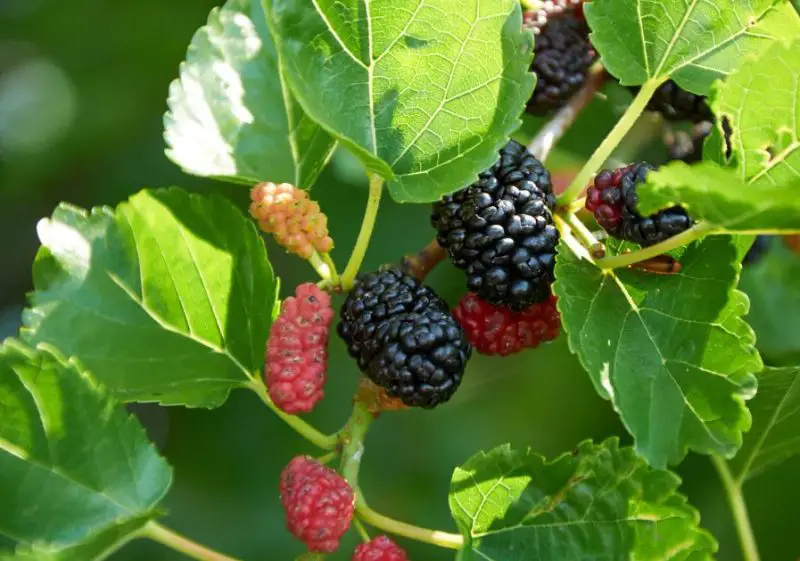
The beautiful mulberry tree is not only visually appealing but also adaptable to various environments, making it a versatile addition to any landscape. In Florida, mulberry trees can thrive in almost all conditions, from light-shaded positions to full sun.
Whether you prefer the richness of black mulberries or the vibrancy of red mulberries, there are options to suit every preference. With their resilience and ability to thrive in diverse settings, mulberry trees offer an attractive and practical choice for Floridian gardeners.
Whether you’re looking to enhance your outdoor space with their lush foliage or enjoy their delicious fruits, mulberry trees are sure to add charm and vitality to your landscape, enriching your surroundings with their beauty and bounty.
Mandarin Tree
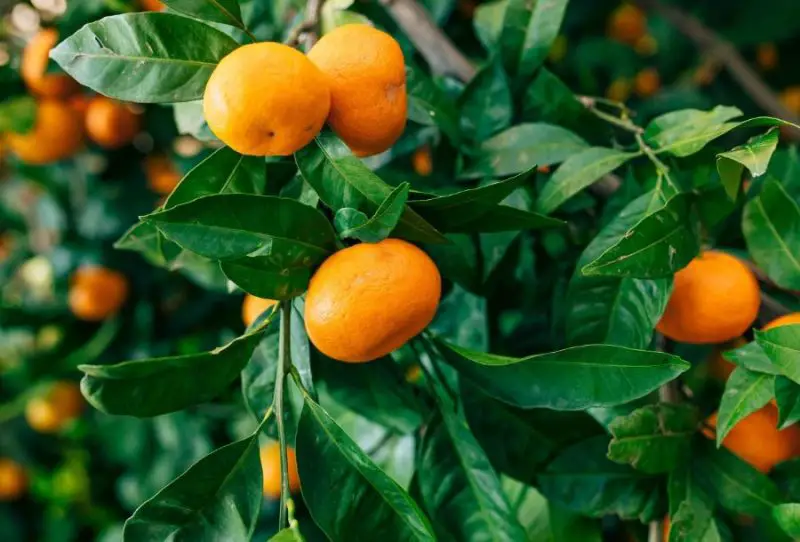
Belonging to the orange category, mandarins encompass varieties like tangerines, clementines, and satsumas. Known for their smaller size, sweeter taste, and thinner peel, mandarins are favored for their ease of peeling. Similar to orange trees, mandarin trees thrive in the Floridian landscape, adapting well to the region’s heat and humidity.
With their ability to flourish in such conditions, mandarin trees offer both aesthetic beauty and delicious fruit, making them a popular choice for Floridian gardens. Whether enjoyed fresh or incorporated into culinary delights, mandarins bring a burst of sweetness to the palate and a touch of tropical charm to the landscape, enhancing the beauty and appeal of any outdoor space in Florida.
Grapefruit Tree
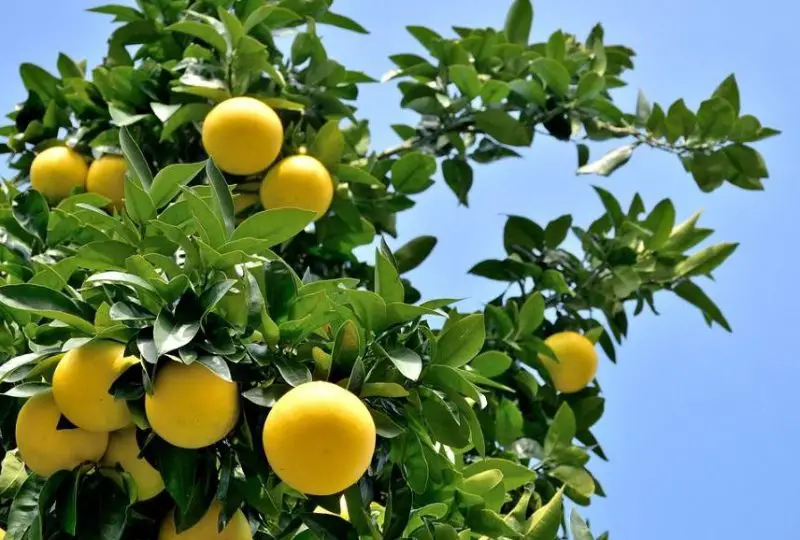
In Florida’s conducive climate of heavy rainfall and subtropical temperatures, grapefruit trees flourish effortlessly, making them an excellent choice for low-maintenance fruit production. Planted in a full-sun position, grapefruit trees ensure abundant harvests. Varieties such as Duncan Pink and Thompson thrive particularly well in the Florida environment, promising bountiful yields for growers.
With their ability to thrive in the region’s conditions, grapefruit trees offer a hassle-free option for those seeking to cultivate fruit in their gardens. Whether enjoyed fresh, juiced, or incorporated into culinary dishes, grapefruits from these trees provide a burst of tangy sweetness, adding vibrancy to any meal or snack.
For Floridian gardeners looking for a fruitful addition to their landscape, the grapefruit tree stands as a reliable and rewarding choice, offering both beauty and bounty throughout the seasons.
Apple Tree
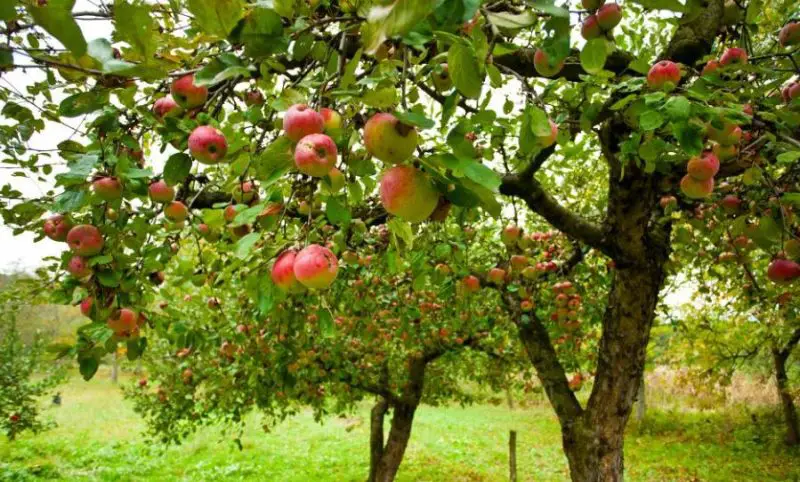
Despite European settlers’ historical ties to apple cultivation, Florida’s soil wasn’t initially conducive to growing apples as it was for oranges. Nevertheless, it’s still possible to cultivate apple trees in your garden. Start by testing your soil’s pH, aiming for a pH of 6.5, ideal for apple growth. Adjusting soil pH can be done naturally if it’s off.
While central Florida may offer some success in apple cultivation, it’s essential to choose the right variety. The Tropic Sweet variety has proven to be hardy in such climates, offering a promising option for growers in the region. With careful soil management and selection of suitable varieties, Floridian gardeners can still enjoy the satisfaction of growing their own apples, adding diversity and flavor to their harvests.
Plum Tree
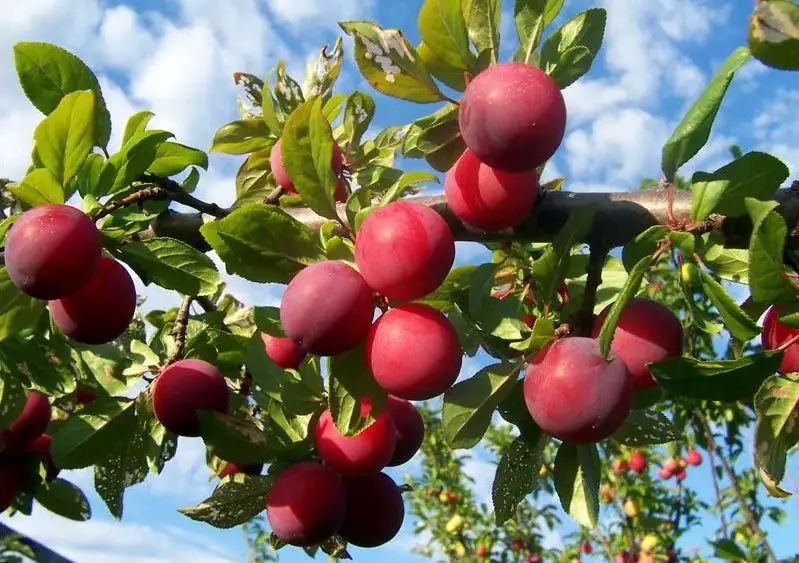
Plum trees thrive in Florida’s climate, with the Chickasaw plum being a popular variety. Characterized by its short, thick trunk and long, thorny branches, the Chickasaw plum yields slender, smooth-skinned yellow to red plums. While it can reach heights of 25 feet, it typically grows to a modest 12 feet, making it suitable for smaller gardens.
Additionally, Gulf plum tree varieties developed by the University of Florida are designed to withstand climates with low chill hours. With the increasing global temperatures, these varieties are becoming increasingly attractive options for gardeners. By selecting resilient and adaptable plum tree varieties, Floridian gardeners can enjoy a bountiful harvest of delicious plums while enhancing the beauty and diversity of their landscapes.
Kumquat Tree
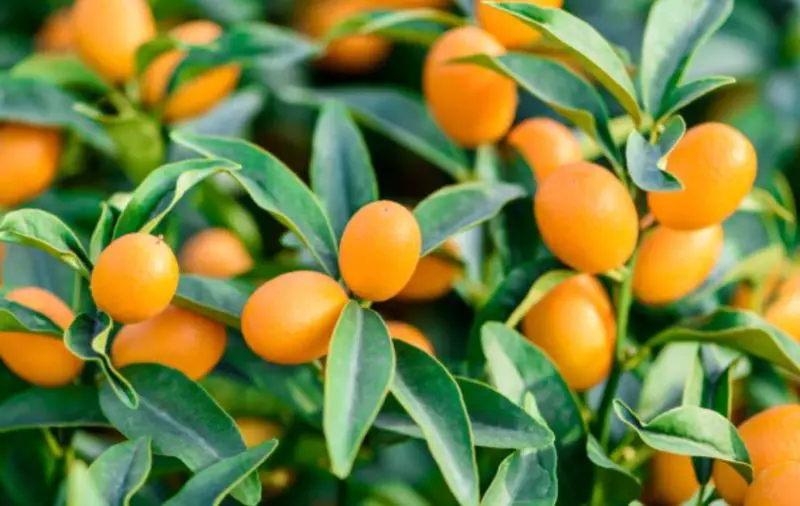
Growing a Kumquat tree in Florida is a straightforward endeavor. These trees are cold-hardy, capable of enduring long winters, while also thriving in the state’s abundant sunshine and soil conditions. Known for their quick fruiting, Kumquat trees typically produce fruit approximately 90 days after blooming. Enjoying a Kumquat is as simple as popping the whole fruit into your mouth, savoring its delicate flavor in one bite.
In terms of variety, both Nagami and Meiwa Kumquats perform well across Florida’s diverse landscapes. With their resilience and ease of cultivation, Kumquat trees offer Floridian gardeners the opportunity to enjoy fresh, homegrown fruit while adding beauty and vibrancy to their outdoor spaces.
Pomegranate Trees
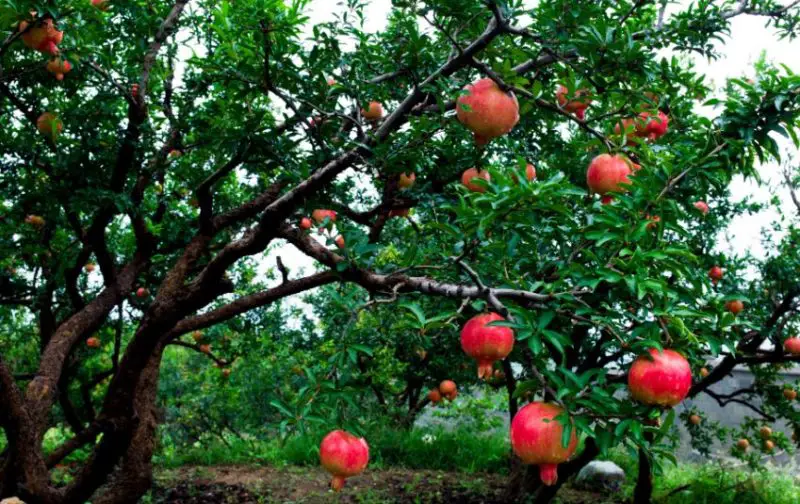
The Pomegranate Tree adds charm to any garden, though it may appear more as a shrub or bush. Careful placement is essential; with attention, it can be trained into a tree-like form over time.
Popular cultivars like Girkanets or Wonderful are excellent choices for gardens, offering both beauty and fruitfulness. Selecting the right spot and cultivar ensures a thriving Pomegranate Tree that enhances the landscape with its ornamental value and provides delicious fruits for enjoyment.
Whether as a focal point or a fruitful addition to your garden, the Pomegranate Tree promises to bring beauty and bounty to your outdoor space.
Orange Tree

The orange tree stands as an emblem of Florida’s rich agricultural heritage, its roots tracing back to the 16th century. Originally hailing from Asia, the orange has become a global staple, firmly ingrained in Floridian culture, trade, and landscapes.
These trees, capable of reaching heights of 50 feet, typically maintain a moderate stature. They thrive in soil that is well-drained, basking in the warmth of full sunlight. Following the delicate blossoming stage, it takes approximately a year for the fruit to reach maturity after the buds have formed.
In the northern reaches of Florida, the Hamlin orange variety reigns supreme. Renowned for its resilience to frost, it thrives commercially and flourishes in home gardens alike. With a fruiting season spanning from late October through three fruitful months, it proves itself as a reliable choice.
Meanwhile, in the southern expanses of the state, a plethora of orange varieties flourish. Among the choices, the naval orange, celebrated for its sweetness, and the Honey Tangerine or Dancy Tangerine, offer tantalizing options for growers seeking diversity in their citrus gardens.
Apricot Tree
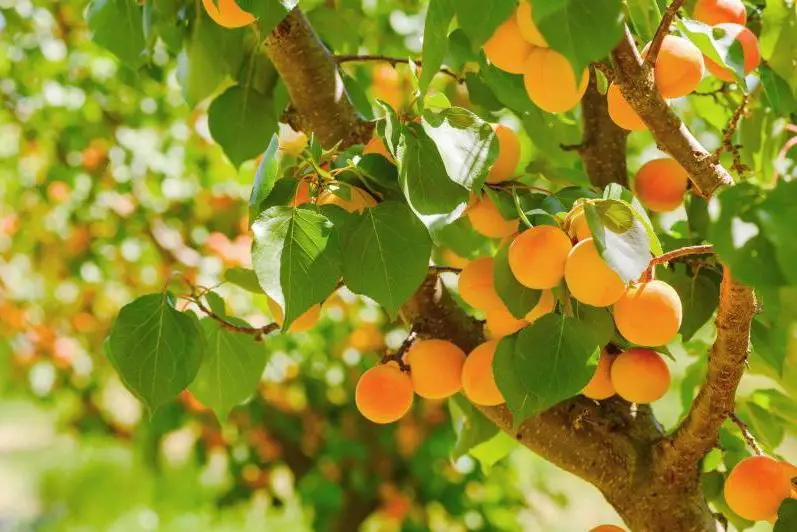
Apricot trees, akin to their citrus counterparts, find a welcoming habitat in the sultry embrace of Florida’s summers, thriving amidst the region’s humidity and warmth. Particularly in arid zones like Miami during January, these trees stand resilient, yielding abundant fruit regardless of scant rainfall. Renowned for their drought resistance, apricots emerge as a prime choice for Floridian orchards.
Given their adaptability, various apricot cultivars flourish in Florida’s terrain, with options like Goldbar, Goldstrike, and Perfection enticing growers seeking diverse flavors and characteristics.
Moreover, the compact nature of apricot trees renders them perfect for small-scale gardens and confined spaces, offering an opportunity for urban orchardists to indulge in fruit cultivation. As winter approaches, safeguarding the tree’s vitality becomes paramount, necessitating the wrapping of the trunk in burlap to shield against frost and cold snaps, ensuring the tree’s vigor and readiness for the forthcoming seasons of growth.
Pear Tree
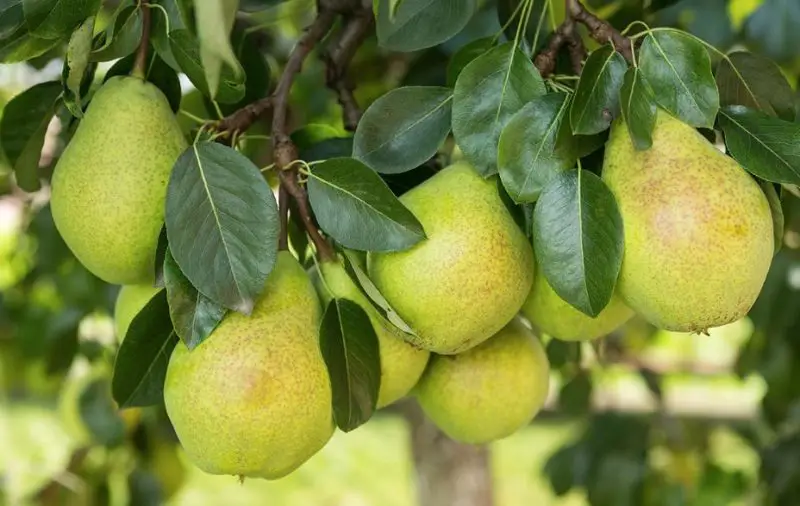
In the warm embrace of Florida’s climate, pear trees, particularly the sand pear variety, find their niche. Dubbed “sand pears” for their gritty texture, these fruits stand distinct from their European counterparts. While European pear varieties may struggle to acclimate, the resilient sand pear, originating from Asia, thrives in the Floridian landscape, albeit with a tougher skin necessitating peeling before consumption.
With a modest height ranging from 8 to 12 feet, sand pear trees can reach towering heights of 40 feet when fully matured. Among the cultivars well-suited for Florida’s climate are Baldwin, Pineapple, and Orient, each promising bountiful yields across the state.
However, for those in the northern reaches of Florida seeking an alternative to the sand pear, the Baldwin pear emerges as the prime choice. Its adaptability to the cooler climate of the region ensures a fruitful harvest, offering a delectable option for pear enthusiasts in the area.
Lime Tree
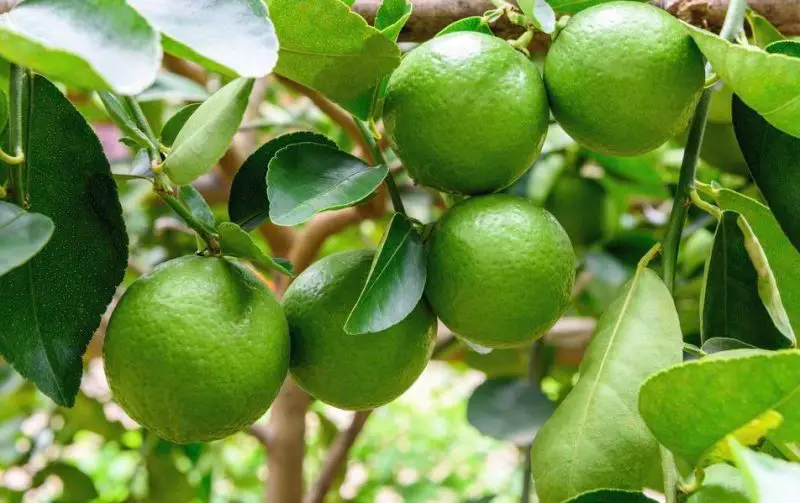
Embedded in Florida’s colonial history, lime trees have left an indelible mark, particularly with the advent of the key lime variety. So prolific was its growth in Florida that it became synonymous with the region, lending its name to the iconic Key lime pie, renowned for its distinctive flavor.
During the late 19th century, the Key lime industry flourished, with substantial harvests contributing to the region’s agricultural prowess. However, by the 1990s, challenges such as citrus canker led to a decline in the Key lime market, prompting a shift towards the Persian lime as a dominant cultivar. Despite this setback, recent years have witnessed a resurgence in the demand for Key limes, signaling a renewed interest in this historical staple.
For enthusiasts looking to add a touch of tradition to their Florida gardens, both the Key lime and Persian lime varieties offer viable options, perfectly suited to the state’s verdant landscape, ensuring a citrus bounty for years to come.
Peach Tree
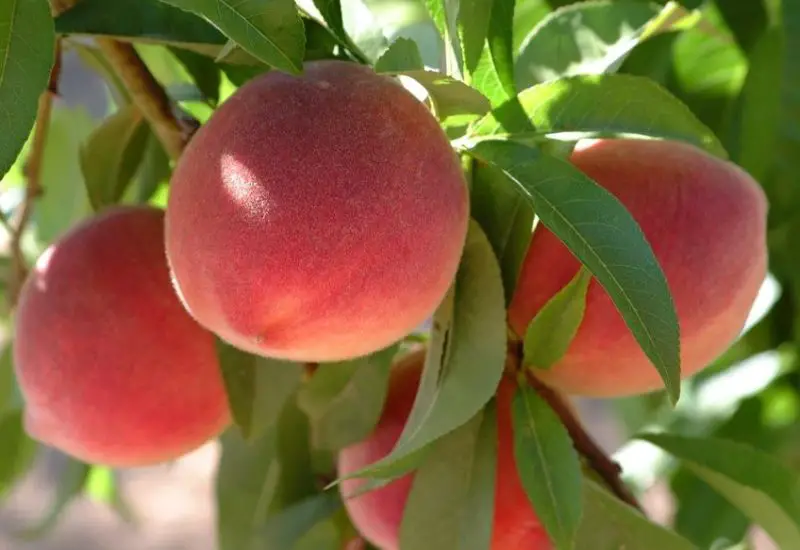
In the diverse landscape of Florida, cultivating peach trees presents both opportunities and challenges. While certain regions may lack the requisite chilling hours necessary for fruit production, Fort Myers emerges as a haven where peach trees thrive, defying the odds. Despite potential limitations, peach trees remain legal to grow statewide, encouraging enthusiasts not to be dissuaded by regional variations.
For those situated in central and northern Florida, cherry trees offer a viable alternative, with numerous cultivars exhibiting resilience and adaptability to the local climate.
While peach trees demonstrate a moderate tolerance to water scarcity, periodic watering becomes essential to mitigate dry soil conditions, ensuring optimal growth and fruit development. However, the promise of harvesting soft, succulent peaches serves as a gratifying culmination of the efforts invested, offering a delectable reward for the dedicated gardener.
Cherry Tree
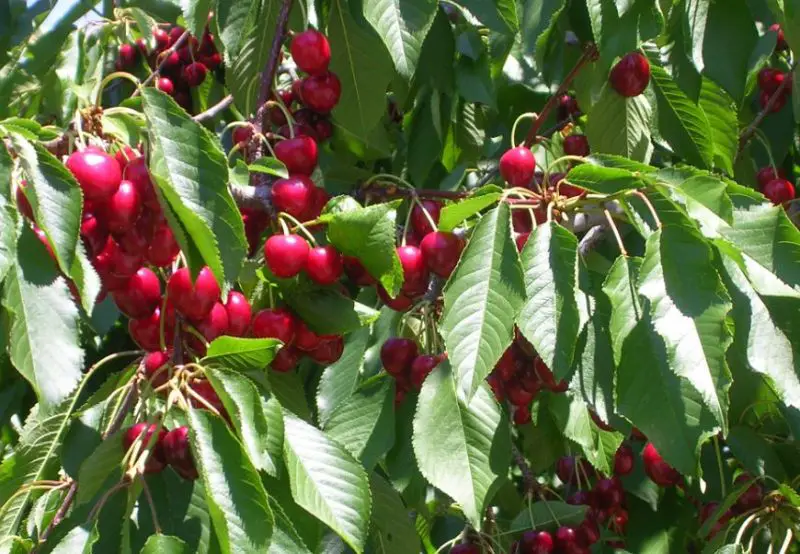
In the diverse climate of Florida, cultivating cherry trees presents unique challenges akin to those faced by peach trees. The necessity for adequate chilling hours to stimulate fruit production may pose a hurdle, albeit not insurmountable. Following the chilling period, the transition to the flowering stage heralds the emergence of delicate cherry buds, eventually blossoming into breathtaking pink or white blooms, promising a potential bounty of cherries if conditions align favorably.
In colder locales of Florida, varieties such as the Black Cherry or Weeping Higan find a more hospitable environment, thriving amidst cooler temperatures. However, despite their allure, cherries are notorious for their finicky nature, often succumbing to the phenomenon known as “cherry drop,” wherein the tree prematurely sheds its fruit, disappointing growers and enthusiasts alike.
Nevertheless, with careful attention and proper cultivation techniques, the prospect of harvesting succulent cherries remains within reach for those undeterred by the challenges posed by these temperamental trees.
Nectarine Tree
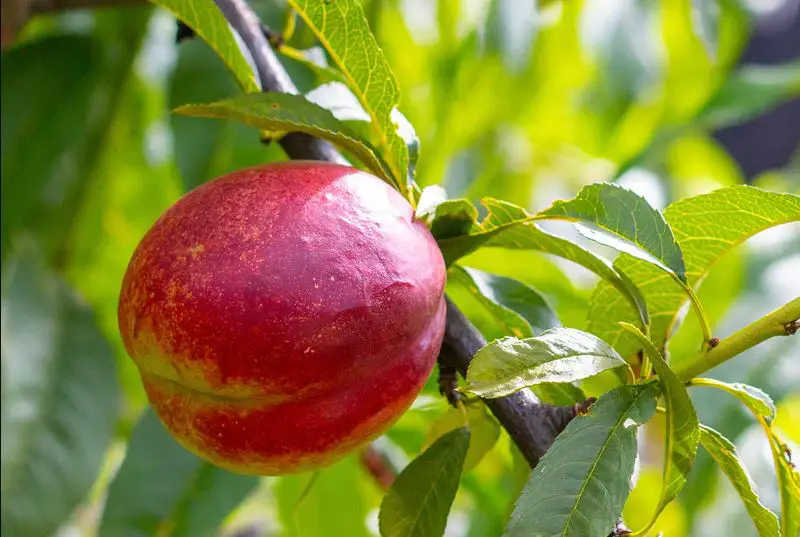
The Nectarine tree stands out as a prime choice for successful cultivation in Florida’s favorable climate. With most varieties thriving in the state’s weather conditions, enthusiasts can anticipate a rewarding experience in nurturing these trees to fruition.
Typically starting as medium-sized saplings measuring around one meter or longer, Nectarine trees typically require three to four years before bearing fruit. However, owing to their affinity for the Floridian climate, these trees often exhibit accelerated fruiting, particularly when planted in sun-drenched positions.
This rapid maturation process not only underscores the adaptability of Nectarine trees but also offers growers the enticing prospect of enjoying their sweet, juicy harvest in relatively shorter time frames.
As such, for those seeking to add a touch of tropical delight to their orchards or gardens, the Nectarine tree stands as a steadfast contender, promising both beauty and bounty in Florida’s verdant landscape.
Persimmon Tree
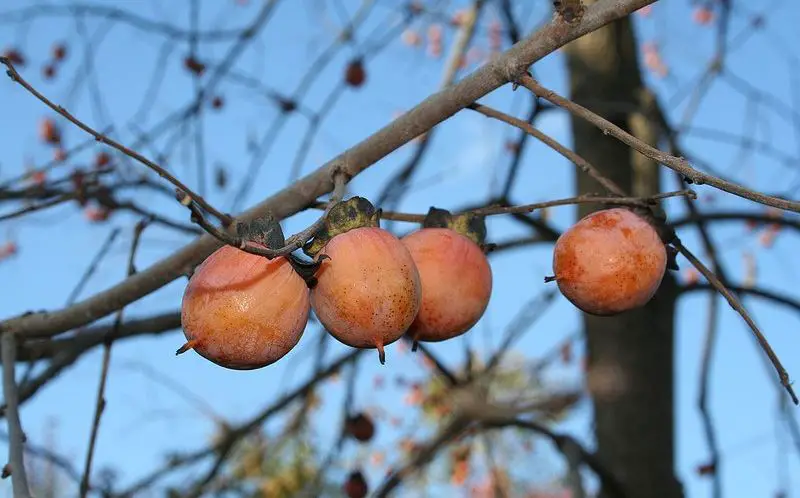
In the lush landscapes of Florida, both the American and Japanese persimmon trees find a welcoming environment. While the Japanese cultivar boasts self-pollination, the American variety requires cross-pollination for optimal fruiting. Among them, the Fuyu Japanese cultivar stands out for its robust growth, thriving across the diverse regions of the state, from north to south.
One of the most appealing aspects of the persimmon tree is its low maintenance requirements. This makes it an ideal choice for individuals with busy schedules, as it thrives with minimal intervention. Despite its easy-care nature, the persimmon tree yields a bountiful harvest yearly, providing growers with a reliable source of delicious fruit.
Whether you’re a novice gardener or a seasoned enthusiast, the persimmon tree offers a hassle-free yet rewarding addition to any Florida garden, promising both convenience and abundance in equal measure.
Lemon Tree
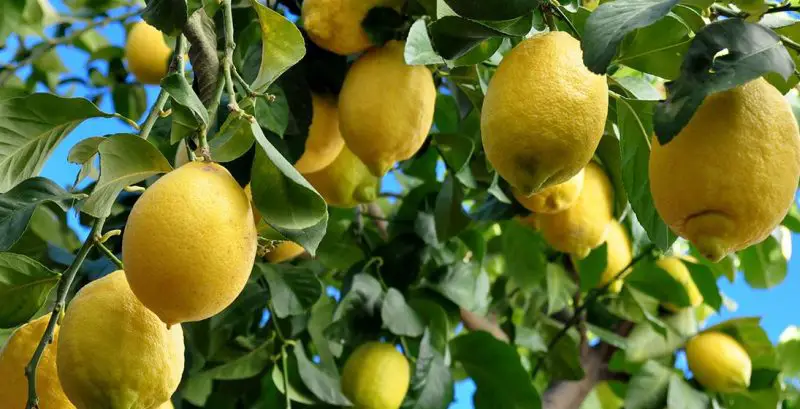
Adding a lemon tree to your Florida garden can be a fantastic choice, as these trees thrive in the heat and require minimal maintenance. They are entirely self-sufficient, needing little water and pruning to flourish.
If you’re looking to enhance your Floridian space but are concerned about the time required for upkeep, a lemon tree is an ideal option. Its ability to look after itself makes it a hassle-free addition, allowing you to enjoy its beauty and the citrusy fragrance of its fruit without the need for constant attention.
With its resilience and low-maintenance nature, the lemon tree offers both aesthetic appeal and practicality, making it a delightful addition to any Florida garden.
Avocado Tree
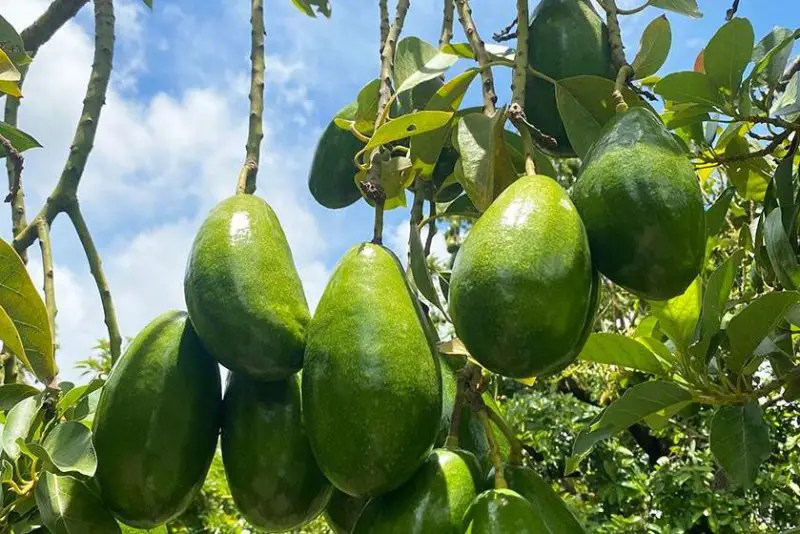
Similar to the Lemon tree, the avocado tree thrives in the warmth of Florida’s climate, making it a reliable addition to most gardens in the state. These evergreen trees boast foliage year-round, ensuring lush greenery in your garden. Additionally, avocado trees adapt well to the thin soil commonly found across Florida, allowing them to flourish in various environments.
When fully grown, avocado trees exhibit a robust trunk and glossy leaves, adding to their aesthetic appeal. However, growers must remain vigilant against Laurel wilt, an invasive disease that poses a threat to avocado trees. Taking early precautions and monitoring for signs of infection can help protect these valuable trees from harm.
Despite the challenges posed by diseases like Laurel wilt, cultivating avocado trees in Florida offers the opportunity to enjoy their creamy fruits and lush foliage, enriching the landscape with their beauty and vitality.
Fig Tree
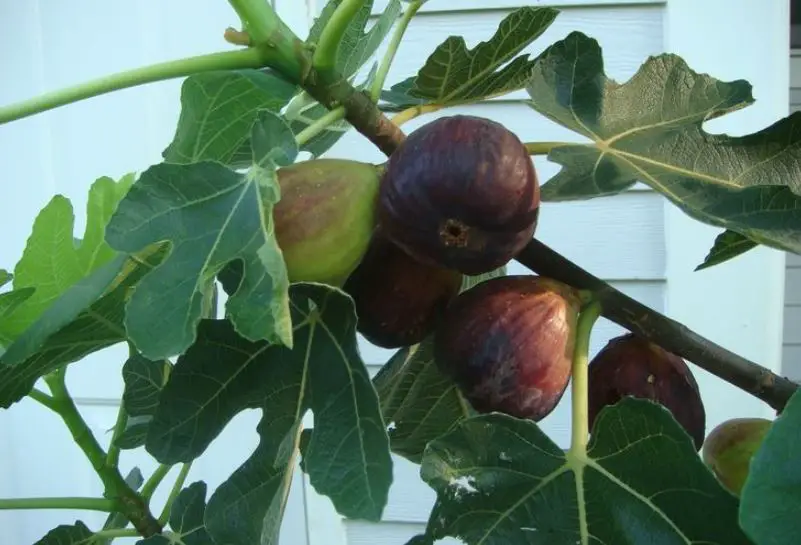
The fig tree boasts over 800 varieties worldwide, finding a favorable habitat in the diverse terrain of Florida, especially thriving in the north and central regions of the state. Despite its adaptability, fig trees in the southern part of Florida might encounter challenges in fruit production despite the development of foliage.
However, this doesn’t diminish the fig tree’s appeal as a garden addition. Its lush foliage and unique fruit make it a desirable choice for landscaping in various parts of the state. Additionally, fig trees are known for their resilience and ability to tolerate different soil conditions, further enhancing their suitability for cultivation in Florida.
Whether you’re a seasoned gardener or a novice enthusiast, incorporating a fig tree into your garden promises to add both beauty and a touch of exotic allure to your outdoor space.
Olive Trees
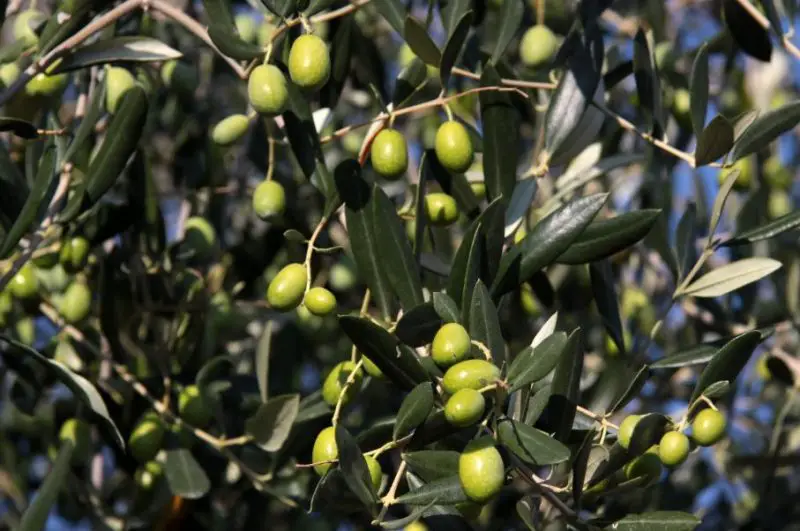
In addition to the native Black Olive Tree, which produces inedible black fruits, Olive Trees are another evergreen variety adorning Floridian landscapes with their silvery foliage year-round. While the fruit of the Black Olive Tree may not be suitable for human consumption, olives from other varieties, such as Anna, Dorset, and Tropic Sweet, are prized for their culinary use, often served as a side dish in Italian pizzerias.
These olive trees thrive in the Florida climate, offering not only aesthetic appeal with their beautiful foliage but also the promise of flavorful fruits. Whether you’re admiring their ornamental value or harvesting olives for culinary delights, Olive Trees make a splendid addition to any garden in Florida, adding both beauty and utility to the landscape.






